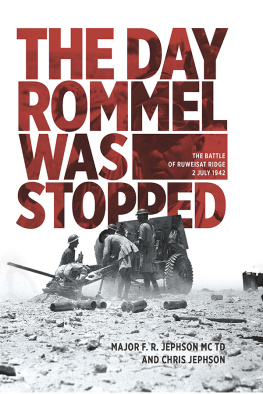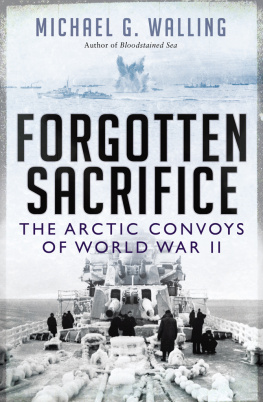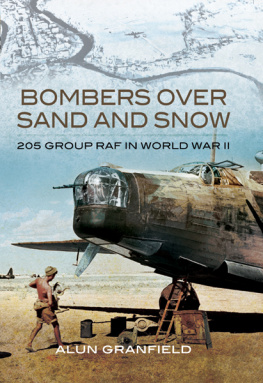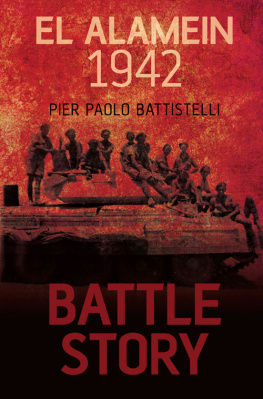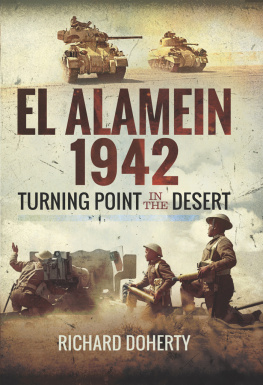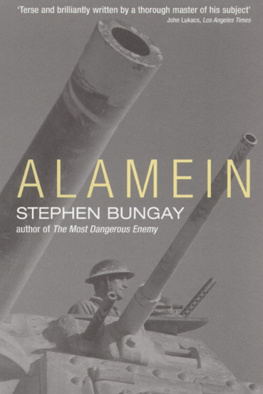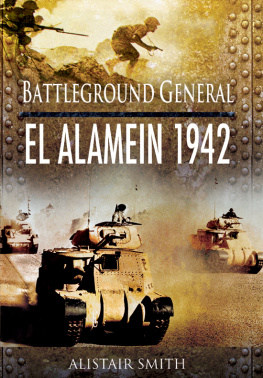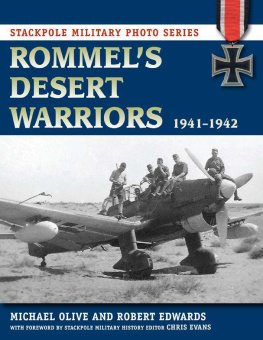F. R. Jephson - The Day Rommel Was Stopped: The Battle of Ruweisat Ridge, 2 July 1942
Here you can read online F. R. Jephson - The Day Rommel Was Stopped: The Battle of Ruweisat Ridge, 2 July 1942 full text of the book (entire story) in english for free. Download pdf and epub, get meaning, cover and reviews about this ebook. City: Oxford, year: 2017, publisher: Casemate, genre: History. Description of the work, (preface) as well as reviews are available. Best literature library LitArk.com created for fans of good reading and offers a wide selection of genres:
Romance novel
Science fiction
Adventure
Detective
Science
History
Home and family
Prose
Art
Politics
Computer
Non-fiction
Religion
Business
Children
Humor
Choose a favorite category and find really read worthwhile books. Enjoy immersion in the world of imagination, feel the emotions of the characters or learn something new for yourself, make an fascinating discovery.
- Book:The Day Rommel Was Stopped: The Battle of Ruweisat Ridge, 2 July 1942
- Author:
- Publisher:Casemate
- Genre:
- Year:2017
- City:Oxford
- Rating:3 / 5
- Favourites:Add to favourites
- Your mark:
The Day Rommel Was Stopped: The Battle of Ruweisat Ridge, 2 July 1942: summary, description and annotation
We offer to read an annotation, description, summary or preface (depends on what the author of the book "The Day Rommel Was Stopped: The Battle of Ruweisat Ridge, 2 July 1942" wrote himself). If you haven't found the necessary information about the book — write in the comments, we will try to find it.
At dusk on Wednesday 1 July 1942, Rommel broke through the center of the British defenses at Alamein. His tanks had overwhelmed the gallant defense of the 18th Indian Infantry Brigade in the Deir el Shein at the foot of the Ruweisat Ridge. At that moment, and for the next twelve hours, there was no further organized defense between the spearhead of the Afrika Korps and Alexandria. Throughout the next day, only a handful of men and guns stood between Rommel and his prize.
In Cairo, black clouds of smoke from burning files showed that many people believed Rommel would not stop short of the Suez Canal, his stated objective. But, on Friday 3 July at 22.56 hrs., only 48 hours later, Rommel called off his attack and ordered his troops to dig in where they stood. The Delta was saved. Just a few weeks earlier, the 18th Indian Infantry Brigade, which took the brunt of the initial attack on 1 July, and the guns of the small column known as Robcol that stopped Rommel on 2 and 3 of July, had been in northern Iraq. General Auchinlecks desperate measure, pulling them 1,500 miles from Iraq into the Western desert, just succeeded but it greatly increased the price of failure.
If Robcol had failed, it is doubtful that Rommel would have stopped at the canal; it does not require much imagination to see his forces threatening to link up with Barbarossa in the Ukraine. This vivid account of the battle of Ruweisat Ridge, the beginning of the battle of Alamein, was written by an officer who was part of Robcol on the fateful day.
Table of Contents
Preamble
Abbreviations
Main Protagonists
Dedication
Preface: July 1942
Introduction: June 1967October 1968
1 Prelude
2 No Eighth Army Clasp
3 The Line That Wasnt
4 The Will of the Commander
5 Approach to Battle, June 1942
6 Approach to Battle, 27 June1 July 1942
7 The Brigadiers Battle Map
8 Two Diaries
9 11th HACs March to the Sound of Gunfire
10 Robcol and 2 July 1942
11 A Visit to the Guns and Nightfall
Epilogue
Postscript: In Recognition
Addendum 1: The Men of Robcol
Addendum 2: 83rd/85th Field Battery Gun Summary
Addendum 3: 2 July 1942 as a Turning Point in the War
Appendix: The Order of Battle: A Research Summary
Notes
Bibliography
Permissions
Index
F. R. Jephson: author's other books
Who wrote The Day Rommel Was Stopped: The Battle of Ruweisat Ridge, 2 July 1942? Find out the surname, the name of the author of the book and a list of all author's works by series.

